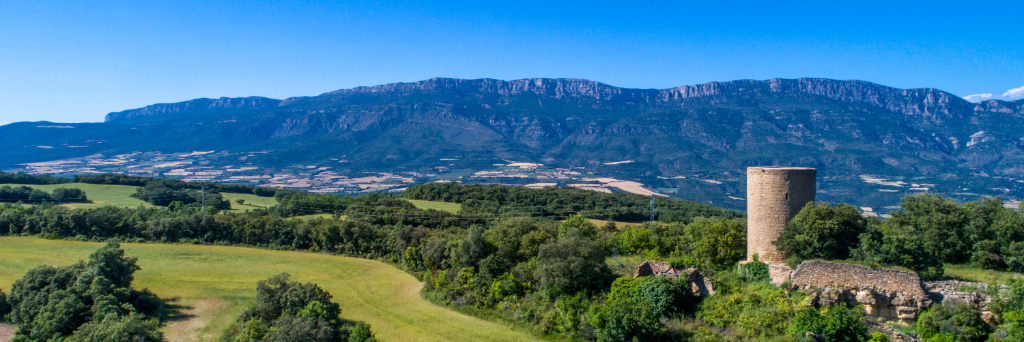Jornada d’Intervenció i descripció del marge del Fondo de la Carlana “la paret que talla com un ganivet”
Dia i hora: Diumenge 29 d'octubre, de 8.45 a 16.30 hores Punt de trobada: Plaça de la Creu, a Mas de Bondia.

The Montsec mountain range is one of Catalonia’s most unique natural spaces in terms of its scenery and biodiversity. It has been catalogued as Partial Nature Reserve, SPAB Area, PEIN Area and Natura 2000 Network.
The Montsec Mountain Range natural area is one of the central Pre-Pyrenean areas with the greatest diversity and range of landscapes in the territory, especially compared to other outer ranges. The elements that make up its natural systems (geology, flora and wildlife) form an environment that is of particular interest and unique within Catalonia. The Montsec mountain range forms a natural barrier between the Tremp basin, the inner mountain ranges of the central Pre-Pyrenees and the initial foothills of the Central Depression. It constitutes a transitional space between the Pyrenees and Pre-Pyrenees to the north and the continental Mediterranean to the south.
VIRTUAL TOUR
STARTÀger Council
Address: Plaça Major, 1
25691 · Àger
Telephone: (+34)973455004
Tremp Council
Address: Plaça de la Creu, 1
25620 · Tremp
Telephone: (+34)973 65 00 05
Dia i hora: Diumenge 29 d'octubre, de 8.45 a 16.30 hores Punt de trobada: Plaça de la Creu, a Mas de Bondia.
Dia i hora: Diumenge 22 d'octubre de 2023, a les 10.30 hores. Punt de trobada: Sala de conferències de la Fira del Medi Ambient, de Tàrrega.
Dia i hora: Dissabte 14 d'octubre, de 9.30 h a 12 h Punt de trobada: Bàscula Municipal de Granyanella.